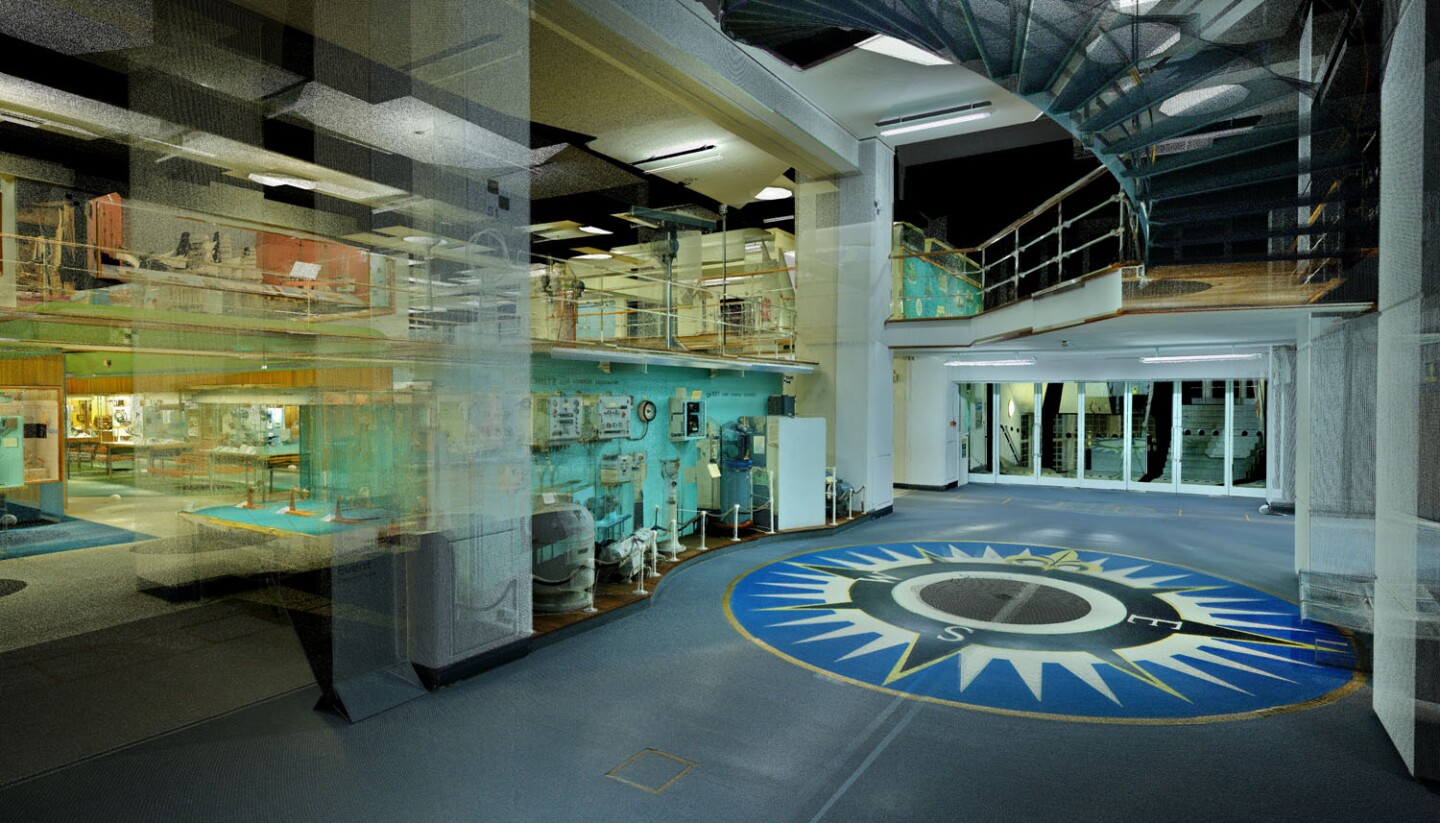At least one writer at Gizmag was saddened when the Science Museum in London removed its famous Shipping Gallery. Closed in May 2012, the venue of many a childhood rainy Sunday will be replaced by the new Information Age exhibit, which opens in September 2014. However, though the Shipping Gallery is gone, it’s also, paradoxically, still with us. That’s because the Science Museum, with the help of the University College London and ScanLAB, has created a virtual version of the gallery to make the exhibit available to future generations.
The Shipping Gallery, which opened in 1963, was the largest gallery in the Science Museum and had remained largely unchanged since it opened. The entrance was a huge floor mural of a compass rose and beyond this was a two-tiered exhibition space of hundreds of exhibits chronicling maritime technology across time and space. It included exact models of everything from giant freighters to pedalos. There were hundreds of incredibly detailed models of passenger ships, ferries, dhows, row boats, and everything in between. The models of warships were so large and detailed that any single one of them would be the centerpiece in another museum.
And there were painstakingly crafted dioramas of English canal locks, dry dock construction, and even Noah’s Ark still on the slipway. One area was given over to working models of ships' engines of all makes and principles. In one afternoon, it was possible to get a good grasp of nautical engineering and triple-expansion steam engines.

Then there were the collections of artifacts, such as actual engines, figureheads, a whaling harpoon gun, binnacles, gyrocompasses and turbines that served as reminders of the breadth and depth of a maritime culture that many people today are scarcely aware of.
Like the rest of the gallery, these and 1,800 objects in all were moved into storage and that should have been the end of the story except for some photos and videos. But the Science Museum wanted to preserve the gallery in a much more realistic and detailed fashion by having the entire space digitally scanned. This way, not only would the museum pieces be recorded, but the cases, the murals and the architecture of the space right down to the carpets.
According to a presentation by John Hindmarch, a PhD student at UCL, on January 31, the scan was carried out by ScanLAB using two Faro Photo 120 terrestrial laser scanners. These used rotating mirrors to record one million reflections per second in a 360⁰ scan at sub-millimeter resolution. Over five nights, 275 scans made 2 billion precise measurements to build a 3D model called a "point cloud" composed of 256 Gb of data that took 16 weeks to process.

“ScanLAB’s laser scanning technology collects data as a vast, highly accurate 3D point cloud and can be used to digitize anything from intricately detailed objects to vast cityscapes with millimeter precision,” says Matthew Shaw of ScanLAB Projects. “The technology allows us to extract a forensic level of detail, quickly and without damaging the exhibits.”
The laser scans were monochromatic, so color was added by means of a digital camera on top of the scanner that takes panoramic images. The colors from these images were mapped on to the monochromatic model. The result is a strangely substantial-yet-insubstantial virtual gallery that visitors can fly around and through.
“This 3D model has allowed us to record 1,800 gallery objects in context, digitally preserving the gallery space as well as the objects themselves. The video tour and point cloud model will open up the gallery and Science Museum maritime collection to a new generation of virtual visitors,” says Daniel Evans, Head of Web at the Science Museum Group.

So far, the scan has been used to create a 7-minute video narrated by curator of transport David Rooney that was made using ten percent of the recorded data and took 48 hours to render. It has also been used to create a set of interactive 3D models for the public (which will be available later this year) as well as a detailed record of the gallery for future designers to consult.
“Releasing Science Museum digital content for public re-use across the internet is a focus for us this year, and I look forward to seeing many innovative ideas for the shipping galleries data from the public,” says Evans.
One possible future use, when the technology is available, could be to use the data to make a Tony Stark-style fully interactive walkthrough model. so visitors can once again see the gallery as it was in the “flesh” instead of view it on a screen.
The Shipping Gallery is no more. It’s very sad to old codgers like me who’ll never be able to revisit a part of their childhood again, but a virtual gallery has its consolations. Those of us who walked through it when the Shipping Gallery was new will be able to do so again despite not having the energy of an excited eight-year old and to show our children what was so remarkable about that place.
The video below is a tour of the virtual gallery.
Source: The Science Museum














